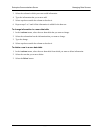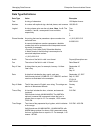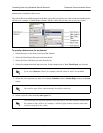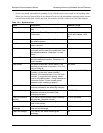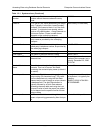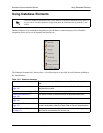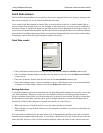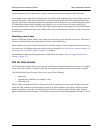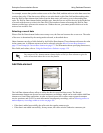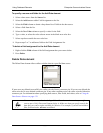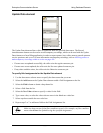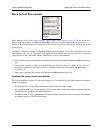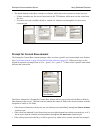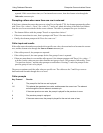
Enterprise Communications Server Using Database Elements
619510003-1A Copyright © 2009 ADTRAN, Inc. 165
value is determined by the data source, and you should not make any assumptions about the order.
For example, assume that you have a data source with a Date field, and that each row in the data source has
a unique date value. If the data source defines a sort order based on this Date field and descending order,
then any Fetch Data element that fetches from the data source will retrieve rows in descending date order.
If a Fetch Data element fetches multiple rows, then the first row will be the row in the fetched set of
records with the newest value in the Date field. Thus another element referencing this Fetch Data element
would always reference the newest row. Without the sort, you cannot predict which row in the retrieved set
would be first.
Selecting a row of data
When a Fetch Data element fetches one or many rows, the first row becomes the current row. The order of
the rows is determined by the sorting modes selected, as described above.
Other elements can refer to fields fetched by the Fetch Data element. These elements reference the value in
the current row. A different current row can be selected, using the Move Current Row element on page 170
or Prompt for Current Row element on page 171 elements.
For information about specifying data sources, filter fields, and values, refer to Using the Data Source
Selector on page 159.
Dial for Data element
The Dial for Data element allows you to specify a data source using the Data Source Selector. It is similar
to the Fetch Data element, except the caller uses the telephone keypad to define the data that is fetched.
The Dial for Data Source Selector allows you to specify the following:
• data source
• optional filter condition, for example a value
• Select On field
When a caller encounters the Dial for Data element, the element selects the records from the source that
match the filter condition (it fetches all the records if no filter condition is specified). Then the element
prompts the caller to enter the value for the Select On field. A search using the Dial for Data element
ignores blanks and special characters. The default search criteria include only alphabetic characters. If you



